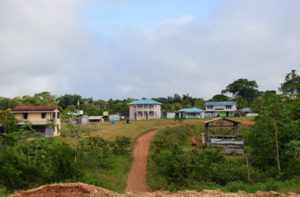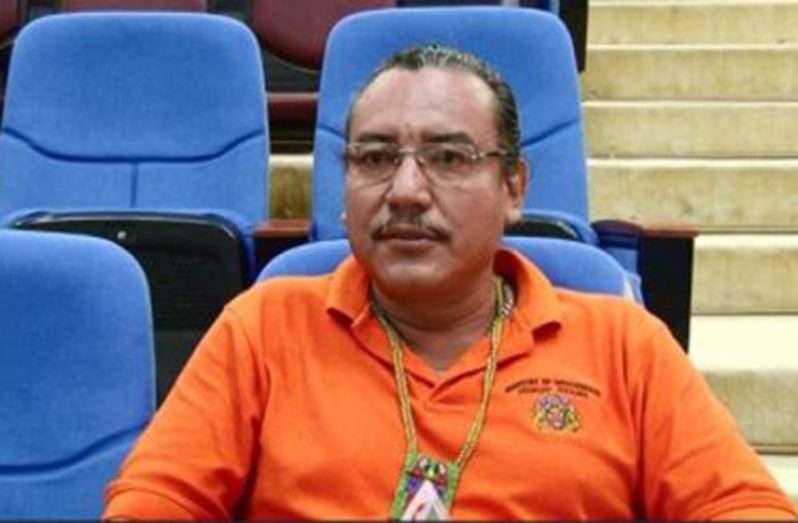…gov’t working to tackle unusually high suicide rate
BETWEEN 2005 and 2016, more than 73 persons have committed suicide in Baramita, Region One, most of them by hanging. From then to now, the number has risen to 78, with the latest two victims-a 24-year-old mother of four and a 16-year-old boy–having taken their lives earlier this month.
This is considered a particularly high rate for the Indigenous village of some 3000 people, and on the ground it is believed that this scourge has much to do with the over-consumption of alcohol in the village. The surge of domestic and sexual violence in the community was also well documented in a November 2016 report by the Guyana Human Rights Association (GHRA), highlighting the struggles of the interior community, where the main economic activity is mining.
“What we discovered is that the vending of strong alcohol has a bearing on this tendency to violence and to suicide. It appears as though the effect on their psyche has been tremendously strong. And we believe this could have something to do with this whole issue of suicide and of course domestic violence,” explained Mervyn Williams, Ministerial Adviser in the Ministry of Indigenous Peoples’ Affairs.
The village is also affected by other social ills such as: high school dropouts, teenage pregnancy, and rape. Sexual abuse of young girls and women is also rampant. With sexual abuse and exploitation on the rise, young girls are now known to be the perpetrators of physically violent crimes in order to protect themselves from being raped time and again, the GHRA report stated.
But despite the other social ills in the community, it always seems to come back to the mass alcohol consumption in the village. “Alcohol abuse is widespread. People, including women and teenagers, are drunk in the middle of the day. Sexual abuse of teenage girls, both by adult miners, police and others, is rampant, with parents permitting sexual abuse of their daughters in exchange for liquor,” the GHRA report, entitled ‘Impact of Mining: Survival Strategies for Interior Communities in Guyana’, noted.
But all is not lost as government has taken notice of the situation and is working to put measures in place to mitigate the scourge on the community. “If you look at the period of time and the instances of suicide you would notice a trend of improvement. More can be done, more is being done. But it requires also the will of the people to support the will of the government, as, in partnership, we seek to improve the quality of life so that these social ills could be gotten rid of,” Williams noted.
The Ministry of Indigenous Peoples’ Affairs has been working along with several other government ministries including the Ministry of Public Health, Agriculture, Natural Resources and Public Security.

“What government did very early in the game is to establish an inter-ministerial task force to hit the ground running to get a sense of what interventions may be necessary to try to alleviate the hardships, to alleviate the pressures and to improve the quality of life of the people of Baramita which is almost exclusively a mining village,” Williams said.
“We discovered that the village does not condone the sale of strong alcohol, particularly high wine, but there has been over time, persons who have been guilty of contravening the regulations of the village by taking the strong alcohol into the village and selling it, to very young people.”
With the installation of a new village council in the community after elections in May this year, strong measures are being taken to attack the issue of alcohol in the village. The village council has expelled two coastlanders who had been vending alcohol, asking them to leave permanently and never return; the council, under the law, has the authority to do so.
The Ministry of Public Health has been involved in medical outreaches, awareness and treatment programmes, and while there is currently no permanent mental health official present in the community, one has visited the area in recent times.
“I know that there is a medical facility there, I also know that on one of their visits the MoPH did take someone who is a specialist in the area of mental health, but of course there is no resident professional and visitations, if they are going to be effective, would need to be more frequent and for longer durations,” Williams pointed out. “But this is not the end of the exercise, this is really the beginning of exploring what the circumstances are that need to be addressed and mapping out a strategy that says these are the interventions that are required, so that’s where we are and we’re working on it.”
On the part of the Ministry of Public Security, there has been the stationing of female police officers within the village, to encourage better handling of sexual violence cases.
But even intervention methods are not without their challenges.
“One of the biggest hindrances to communication is the language barrier. In Baramita people speak Carib, that’s the first language [and] English is an acquired language so it poses a problem in the school, in the health centre and in the security sector,” Williams said.



.jpg)








